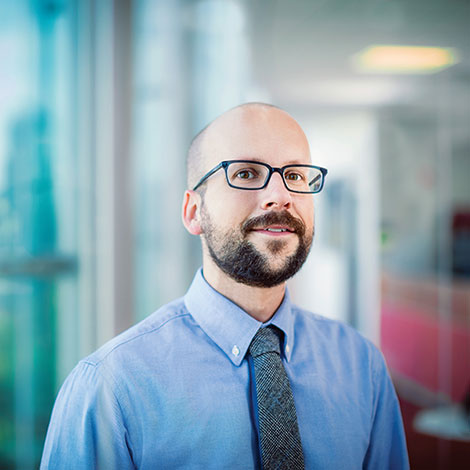How to Train 'Superhuman' Geoscientists
By Rachel Ewing
Photos by Avi Cohen Nehemia/Thinkstock Photos and Charles Shan Cerrone
February 02, 2017
The radiologist interpreting your MRI scan and the geologist assessing our natural resource reserves have one important thing in common: They are both exceptionally skilled at perceiving important cues in an image or vista that the rest of us are almost certain to miss.
“These are almost superhuman perceptual abilities,” says Chris Sims, PhD, an applied cognitive and brain scientist and assistant professor in the Department of Psychology at Drexel.
While researchers in medical fields have invested time and effort into understanding the nature of these abilities, Sims is focused on discovering how people develop perceptual expertise in the context of STEM (science, technology, engineering and mathematics) disciplines.
In geoscience, these visual skills are essential for answering key questions shaping humanity’s future welfare, from identifying climate patterns that will shift with climate change, to better predicting earthquake activity. Answering these geological questions is rarely achievable with automated laboratory tests or electronic scans; it takes an expert who can see and understand the visual features of the landscape.
But how do you become an expert in this type of perceptual ability?
“Right now, there’s very limited understanding in pedagogy or educational psychology about how you train someone to become a perceptual expert,” Sims says. “Currently, it’s kind of trial by fire; you just do it until you get good at it. Some people get better at it than others.”
 Chris Sims, PhD
Chris Sims, PhD
Sims aims to find out how that learning process works and use those insights to improve perceptual training in STEM fields with a new collaborative grant from the National Science Foundation. Awarded to Sims and two co-investigators at the University of Rochester — cognitive scientist Robert Jacobs, PhD, and geologist John Tarduno, PhD — the five-year grant totaling more than $740,000 will allow them to develop and experimentally test computational models of this learning process.
“We think we can help develop a theory that will accelerate learning and acquiring perceptual expertise,” Sims says.
The work begins with developing theories in the form of computer code. Traditional theories in psychology are essentially verbal descriptions of a phenomenon in the mind. Sims and Jacobs specialize in computational cognitive modeling, which is a newer and far more precise way of describing a psychological process like perception by actually building its elements into a computer program. They are building a computational model that mimics the perceptual system of a novice geologist. Using that model, they will program different types of training experiences and use the model’s performance to generate predictions about what type of training may work best for real, human geologists.
Then, they will put those predictions to the test with undergraduate geoscience students at Drexel and the University of Rochester. In a laboratory learning environment, students will learn to distinguish important visual elements in digital elevation images of geological features using one of four different visual training regimens that Sims and colleagues are developing. Each training method reflects a different theory of how visual memory processes change as a person develops expertise.
The team will enroll both first-year geoscience majors, who are relatively novice, and upperclassmen, who may have logged hundreds of hours of fieldwork and are comparatively expert, in hopes of showing that their models reliably predict how non-experts learn.
If one of the training regimens proves more effective than the rest at helping inexperienced geoscientists learn faster, it would show promise for use in applied educational environments to improve perceptual learning.
“We want to develop a science of perceptual training in STEM disciplines,” Sims says. “It’s exciting because we’re among the first to have a really strong approach that’s based on both theory and computational modeling.”
This article originally appeared in the College of Arts and Sciences' Ask magazine feature story, "Agents of Change." For more Ask stories, visit askmagazine.org.